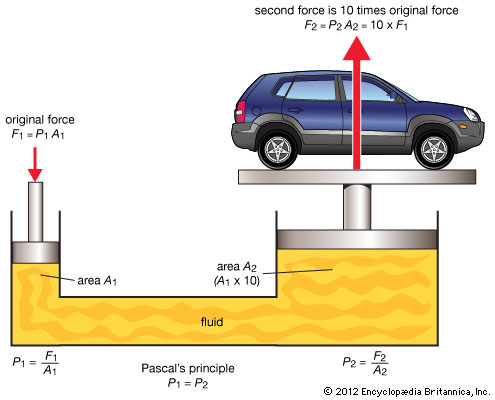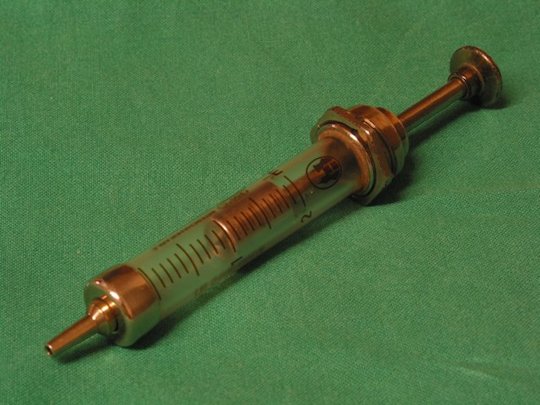Blaise Pascal
Pascal also made many contributions to
the world in the form of inventions some of which are still
used today. One invention that was most related to his work
in hydraulic fluids is the hydraulic press. The hydraulic
press is a device that most simply described uses the
proportions of force applied to areas moving objects over a
distance. For instance, the device translates a small force
over a small area into a large force over a large area but
at a decreased distance. An example of this in use is a car
jack, which upon some small presses to a long lever can lift
a car but it takes several presses of the jack to lift the
car a few inches.
 |
Basic principle of Pascal's hydraulic press(left) as explained above Picture from: Encyclopedia Brittanica |
| Pascaline or Pascal's Gears(right) as
eplained below Picture from: imgbuddy.com |
 |
Pascal's Gears or the Pascaline, was an invention that Pascal made in order to make his fathers job easier by computing numbers for him. The gears made it possible to input two numbers to be added or subtracted and given the answer. Blaise made his first prototype of this device at about age 18. A similar device is still used today in car odometers.
The syringe is another invention that
Pascal invented based on principles similar to the hydraulic
press and some of his other scientific theories and
findings. The syringe uses pressure in one direction on a
fluid that is then applied to every direction of the fluid,
often used to force it out that other end of the
syringe.(below)

Picture from: Wikipedia
Pascal's work was not strictly based on
hydraulic fluids though, he also made several attempts to
invent perpetual motion machines. In this endeavor he
accidentally invented what is now the roulette wheel used
for gambling.